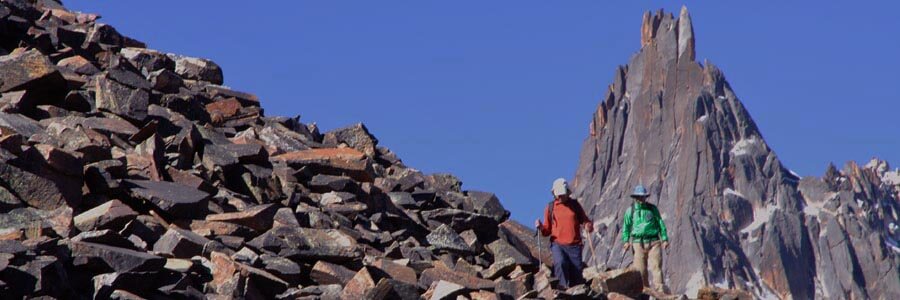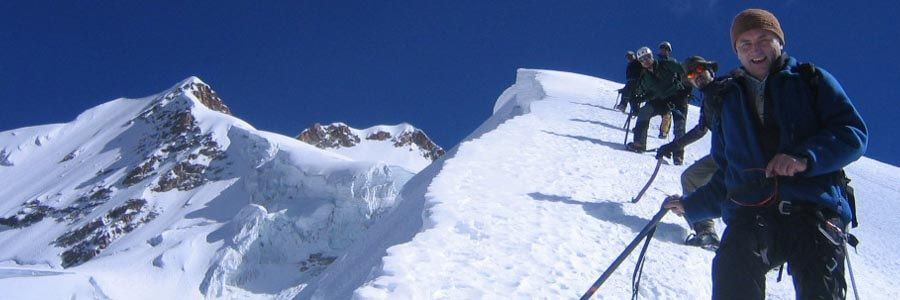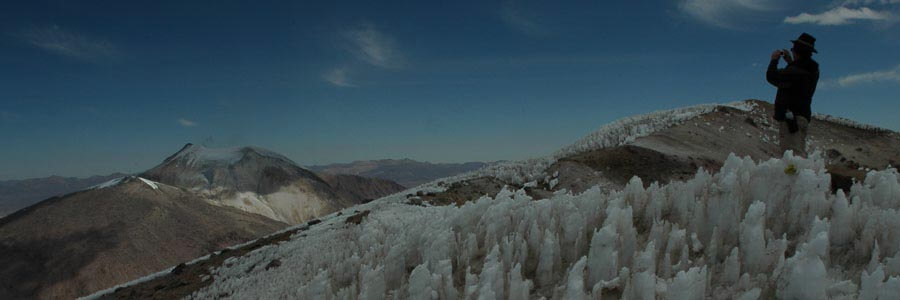"Acclimatization is a requirement not an option".
Andean Summits does not take responsibility of clients who are unable to finish a trip or get sick due to improper acclimatization procedures.
Acclimatization is essential for high altitude activity. There are no medicines that guard against acclimatizing to the altitude, and fitness is not a substitute (sometimes fit young people tend to have more problems than the rest). Acclimatization is an inevitable and normal process that takes different timing on every individual. As part of the process, the body gradually adapts to the lower atmospheric pressure when traveling to high altitude lands.
Coming from sea-level, breathing increases by 50% in order to maintain an adequate oxygen-carrying capacity in the blood upon arrival to elevations above 3.500m (11.480ft). Because of that increase in breathing and perspiration, the body loses water much faster than at sea level.
Some people may suffer a mild form of altitude sickness which symptoms are: breathlessness, accelerated pulse, lethargy, mild headache, fatigue, insomnia, loss of appetite and dehydration. These symptoms should pass in a couple of days, otherwise consult to a doctor.
It takes 3 generations to become genetically adapted (if you decide to live here, your grandchildren will be born with high altitude physiological adaptation); however, depending on the individual, around a week should be adequate time for the travelers to adjust and begin physical activities without any health risk.
We suggest you to have in mind the following considerations for a successful acclimatization for your holidays in the Andes.
At arrival
The way altitude will affect you will depend of the elevation of the airport you are arriving to, for instance:
- Santa Cruz de la Sierra's airport is located at 400m (1.312ft); arrival at this airport should not affect you at all.
- Cochabamba's airport is located at 2.570m (8.429ft), Sucre's airport is located at 2.790m (9.151ft); arrival at these airports may affect you a little but symptoms will not be highly noticeable.
- La Paz's airport is located at 4.100m (13.448ft), some people suffers a mild form of altitude sickness which symptoms should disappear within a few days if you follow a proper acclimatization process.
To reduce the risk of altitude sickness when flying to high places, you should:
- Drink enough liquids. Check your urine periodically to make sure it is pale in color, dark yellow urine indicates that you are getting dehydrated.
- Particularly at the first day of arrival, eat very light (low fat food high in carbohydrates), and rest a lot (take it easy when walking). Alcoholic drinks can be contraindicated during the acclimatization process.
- Spend 1 or 2 days doing little physical exercise. For instance: sightseeing, visiting museums, traveling by car, or maybe shopping.
Normally after 3-4 days you will be ready to do some hiking or climbing "small" peaks in the highlands, and after 8-10 days you will be ready to go big ones.
If you are planning a trip to the cloud forest or the Amazon basin, in order not to lose acclimatization we suggest you to postpone it for the end of your planned activities at the highlands. If you descent to the lowlands for a long period of time, you will lose your acclimatization and will need to start all over again.
On the trip
Trekking & climbing
If you are planning to climb mountains over 5.000m (16.400ft), we suggest you the following plan:
- After arrival, spend 1-2 days taking it easy at altitudes between 3.000m (9,.840ft) and 4.000m (13,120ft).
- Next spend another 2-4 days of moderate physical activity at the highlands (i.e. hiking, mountain biking, Kayaking or doing some active travel).
If you are planning to climb mountains over 6,000m (19,680ft), additionally we suggest you to:
- Climb a couple of peaks or volcanoes of 5,000m (17,000ft) to 6,000m to (19,680ft).
-
Trek along the mountain range crossing high altitude passes between 4,500m (14,760ft) to 5,000m to (16,400 ft).
High camps
The quality of sleep is normally poor at high camps. Some people may have problems during the night: mild headache, waking-up several times feeling the lack of oxygen, or having strange and very vivid dreams. All this symptoms are relatively normal when sleeping above 5,.000 m (16,400 ft).
Medication
Painkillers
Since mild headache is relatively normal, mild painkillers like: Ibuprofen, Aspirin, or Tylenol, can also be used in a prophylactic way.
Drinking some coffee (that contains Caffeine) may also help a little when having some headache.
In some cities of South America you can find a medication called "Sorochi pills" ("Sorochi" or "Mal de Puna" is the local name for the Acute Mountain Sickness), which contains nothing else than Aspirin and Caffeine.
In Peru and Bolivia Coca leaves have been used for centuries as a traditional medicine (this leaves are legally sold on streets and shops). You can try a Coca leave tea, or better, to chew them and reduce a mild headache. Although, this medicine is more psychological, since the amount of "Anesthetic" you will get in just few leaves is practically none existent (some traces can be found only with specialized analysis).
Diamox
Some of our clients (mainly American citizens) are normally suggested to take Diamox (Acetazolamide) when traveling to highlands. This chemical speeds up the acclimatization process, by acidifying the blood, and accelerating the respiration in order to promote better oxygen absorption.
You should consult your doctor for a prescription and possible side effects that occur in some individuals. This drug possesses diuretic characteristics and may also cause dehydration. Some people have reported a prolonged tingling sensation in their fingertips.
Hape & Hace
High Altitude Pulmonary Edema (HAPE)
Symptoms include: pink saliva and sputum, blue lips, labored breathing, fluid in the lungs. If you suspect the onset of HAPE, descend the victim immediately and consult a specialist. This is a more serious form of altitude sickness.
High Altitude Cerebral Edema (HACE)
Although rare, it can be fatal. Symptoms include: severe headache, nausea and vomiting, loss of appetite, disorientation, visual problems, abnormal behavior, and eventually loss of conscience, coma or even death. If you suspect the onset of HACE, descend the victim immediately and consult a specialist.








